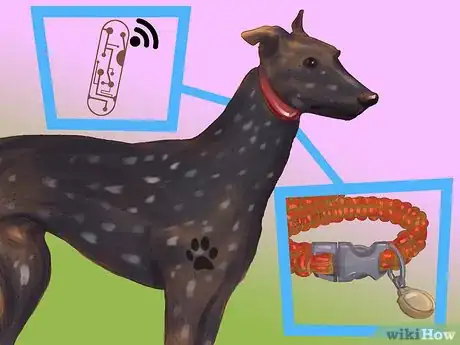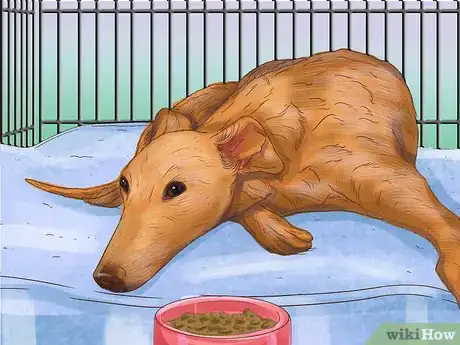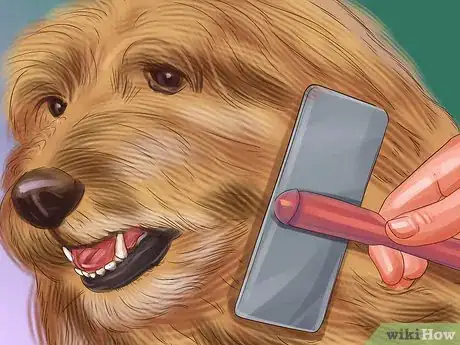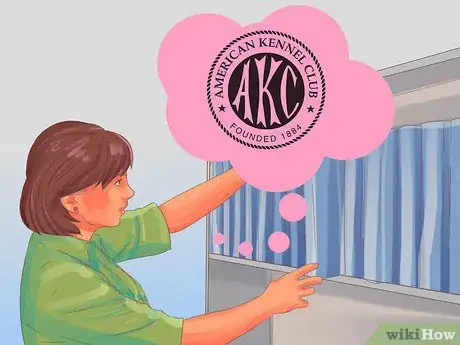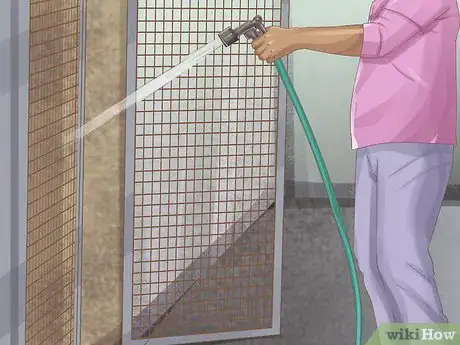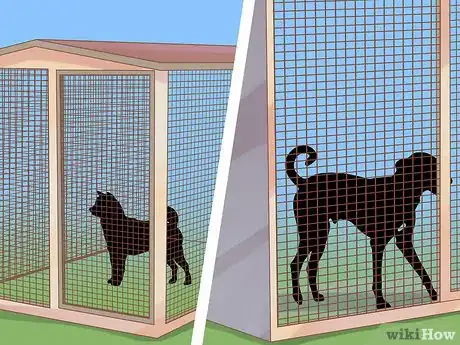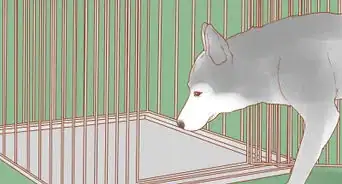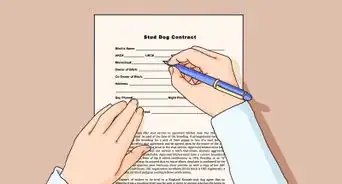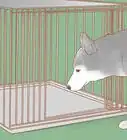This article was co-authored by April Power. April Power is a Dog Breeder and the Owner of Power Goldendoodles in Boise Idaho. She places her puppies all around the United States, specializing in breeding English Teddybear Goldendoodle puppies. In June 2020, We Love Doodles named Power Goldendoodles as one of the 9 Best Goldendoodle breeders who sell in California.
This article has been viewed 21,626 times.
American Kennel Club inspections are performed to make sure that all kennels and breeders registered with the AKC comply with their policies. Any breeder or kennel who registers 4 or more litters in a year may be inspected by the AKC. Those who breed more frequently are more likely to be inspected; however, a few smaller breeders are inspected annually. You may also be inspected if your facility has been reported to the AKC by an unhappy customer, neighbour, or fellow AKC member. In order to pass an AKC inspection you need to demonstrate that you comply with AKC’s policies regarding dog care, record keeping, and facility maintenance. Failure to comply could result in membership suspension, a fine, and, in cases of animal abuse, notification of local authorities.
Steps
Providing Care to the Dogs
-
1Provide each dog with proper identification. In order to pass an AKC inspection, you will need to make sure that all of your dogs can be identified either through a microchip, tattoo, or collar tag. Proper identification is a requirement of the American Kennel Club and it is up to each breeder, which method they choose. [1]
- Microchips: Are tiny electronic chips that are injected into the dog’s upper back. These chips can be scanned in order to identify the dog.
- Tattoos: Are an identification marker that are tattooed onto the dog’s skin usually under the ear flap or on the inner thigh. The problem with tattoos is that they can fade over time and become difficult to read.
- Collar tags. Are a visible form of identification that is worn around the dog’s neck. The major drawback is that in order for them to be effective the dog always needs to be wearing a collar.
-
2Ensure all dogs are in good health. The AKC inspectors will also check the overall health of the dogs to make sure there are no visible illnesses. In order to pass this part of the inspection, your dogs should be in good health and receive appropriate routine and preventative health care.[2]
- For instance, all of your dogs should be up-to-date on their shots including rabies, parvovirus, hepatitis, and canine distemper.
- There should be no visible external parasites on the dogs, such as ticks or fleas.
Advertisement -
3Provide all dogs with access to food and water. Inspectors will also check to make sure that all dogs have access to drinking water and proper food. Food does not need to be left down at all times, but should be provided at appropriate intervals throughout the day. If a dog has a protruding rib cage and looks skinny or weak, then the inspector may determine the dog is malnourished.
-
4Groom your dogs. If your dogs are not regularly groomed, this may be considered a sign of neglect to the inspector. For example, dogs that have a lot of matts in their coats or are visible dirty, are likely uncomfortable and not properly cared for. Make sure that all of your dogs receive regular brushing and grooming.
-
5Exercise your dogs regularly. It is also important that all of the dogs receive exercise and play time daily. One way to make this apparent to an inspector is to demonstrate that there is a space provided for play. For example, you could have a fenced in portion of the yard that is used by the dogs to play and run around. You should also have toys available for the dogs to play with.
Keeping Complete Records
-
1Make records of each litter. Typically during an inspection the agent will have a digital copy of the registration you have submitted to the AKC and will want to check that these match your individual records. For instance, they may ask you questions about a specific litter and want to know the number of puppies, breeding and sale dates, names of buyers, and registration numbers.
- In order to help keep records you can use the kennel management software provided by the AKC or download printable forms from the AKC website.
- Breeders are expected to keep records up to five years.[3]
- AKC inspectors may provide you with tips on how to improve your record keeping.
-
2Create records for all adult dogs. It is also important to have individual records for each adult dog that you own, breed, or show. For example, you will need to know their registration information, any litters they have produced, medical records, awards etc. The inspector will likely ask you a few questions about a particular dog to ensure that your records match with the ones you have provided them.[4]
- If you co-own a dog with another breeder, you will need to check in regularly to make sure that all of your records concerning that dog are up to date.
-
3Keep records of breed histories. Record keeping is very important to the AKC because this helps to ensure that the breed standard is maintained over time. For example, your records should include the history and lineage of each dog. This information is crucial to the AKC because it is used to ensure that purebreds remain pure which can help to protect against genetic diseases.[5]
- If you have more than one breed at your facility, you will need to keep track of each lineage separately.
Maintaining a Suitable Facility
-
1Maintain a clean facility. AKC inspectors will check to ensure that the facility and all enclosures are clean, free from debris, and that feces are picked up in a timely manner. A lack of cleanliness can also signal neglect which may result in suspension from the American Kennel Club.
-
2Ensure the primary enclosure is a suitable size for the dogs. In order to demonstrate that you are complying with the AKC’s policy on caring for dogs, all enclosures will need to be an appropriate size for the dog. This means that the dog is able to sit, stand, lie down, and turn around comfortably within their enclosure. Solid floors are preferred; however, the AKC will allow a perforated floor as long as there is a protective coating. An area with solid flooring must be provided somewhere within the enclosure.
-
3Post a disaster plan. The inspector will also check that you have a disaster plan prepared in case of an emergency. Although most people have thought or talked about what they would do in an emergency, it is very important to have the disaster plan written down and posted so that all staff can access the plan. The disaster preparedness plan should reflect the facility and type of dog breed(s) owned.
- For example, create a portable kit that includes food, bowls, water, leashes, first aid equipment, emergency escape routes, and blankets in case of an evacuation.[6]
Warnings
- The inspector may conduct a DNA test on a current litter by taking a sample of the puppy’s DNA as well as a sample from the sire and dam. You will only be notified, and possibly suspended, if the DNA does not match.⧼thumbs_response⧽
- Random inspections can take place if the AKC has received a complaint about your kennel.⧼thumbs_response⧽
References
About This Article
To pass an AKC inspection, make sure all of your dogs are identifiable with a microchip, collar tag, or tattoo. You'll also need to make sure your dogs are in good health by keeping their vaccines up to date and checking they don’t have fleas or ticks. Since the inspector will look for signs of undernourishment, make sure to give your dogs regular access to food and water. The inspector will also check your records, so you’ll need to maintain a record of every litter you’ve reared as well as individual records for every adult dog. Additionally, keep your facilities clean, since a dirty kennel can result in you failing the inspection. For tips from our Veterinary co-author, including how to develop a disaster plan for the inspector to review, read on!
